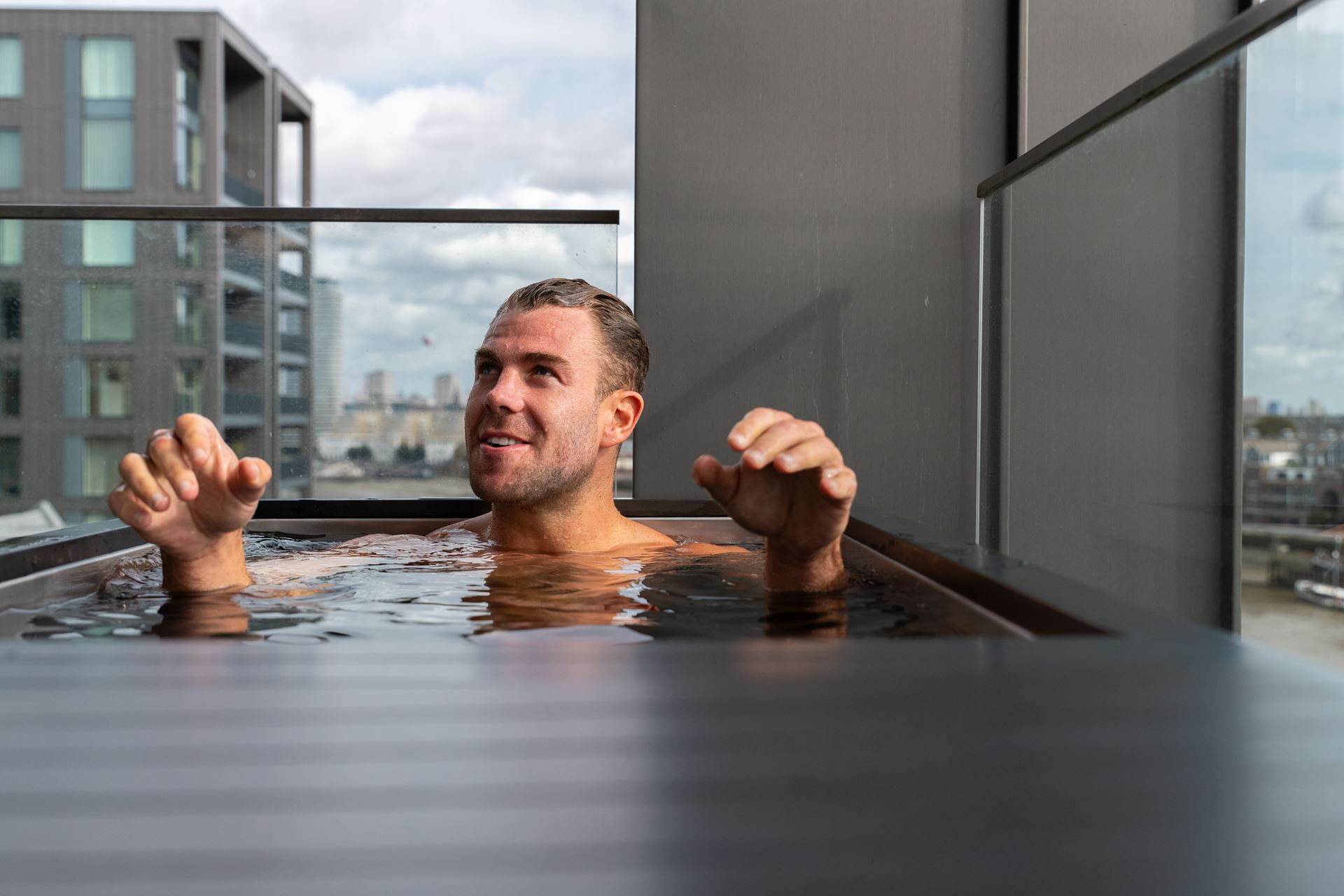Made from stainless steel with a teak top and a black aluminium surround, the Chill Tub looks stylish and is suitable for indoor or outdoor use. Its temperature settings go as low as 3 degrees and it holds up to 400 litres of water. It has a built-in ozonator for clear water plus an insulated cover to help reduce running costs. With an antifreeze function to help prevent the formation of ice or frost on the heat exchanger coils or other components of the system. A hose pipe connection is also available for draining.

What Temperature Should I Set My Chill Tub at?
Having a Chill Tub in your home is one of the best ways to enjoy a relaxing and refreshing time after a long day. But if you’re new, it can be quite confusing to know the ideal temperature to set your Chill Tub at. Setting your Chill Tub at the right temperature is important to ensure you maximise its benefits while keeping safe. In this blog, we will discuss in detail what temperature your Chill Tub should be set at.

The ideal temperature for your Chill Tub varies depending on your preferences and the environment. However, a temperature range of 3°C – 4°C (36°F to 40°F) is considered safe to use and enjoy the benefits of cryotherapy. It’s important to note that anything below this temperature range could cause potential harm and might result in frostbite or hypothermia.
Moreover, the temperature of your Chill Tub needs to be monitored regularly, especially if you are elderly and might have a lower tolerance to cold temperatures. Experts recommend that elderly people should avoid extremely low temperatures and remain exposed to low temperatures for a maximum of 10 minutes.
It’s important to note that the environment and climate can also affect the temperature of your Chill Tub. If you live in areas with a colder climate, you might need to set your Chill Tub to a higher temperature, while if you live in regions with a warmer climate, a lower temperature might be ideal.
It’s also important to adjust the temperature of your Chill Tub according to your specific needs. For example, if you’re using it to soothe sore muscles, keeping the temperature at 3°C – 4°C (38°F to 40°F) is ideal. However, if you find that too cold, you can set it between 4°C – 6°C (40°F to 42°F) for a milder cooling experience.
We recommend starting off at a higher temperature, and gradually reducing this as your body becomes more familiar with the cold water surrounding.
It’s also important to maintain a consistent temperature throughout the session and avoid abrupt changes in temperature, as this can do more harm than good. Gradual changes through a specific temperature range are recommended.
Setting the right temperature for your Chill Tub is important to ensure that you enjoy your time and maximise the benefits safely. We recommend setting it between 3°C – 4°C (36°F to 40°F) and adjusting it to meet your specific needs and preferences. Don’t forget to regularly monitor its temperature to ensure that it remains in the safe range. With this information in mind, you can now comfortably enjoy your Chill Tub and all its benefits.

Frequently Asked Questions
Its temperature settings go as low as 3 degrees and it holds up to 400 litres of water. We don’t recommend setting it to 3 degrees the first time you use it. You need to gradually build up to this.
The Chill Tub must be plugged directly into an RCD protected circuit on a 13-amp socket or box. Do not use an extension cable to run the Chill Tub, this can be a fire hazard.
The dry weight of the Chill Tub is 125kg. When the Chill Tub is filled with water it can weigh up to 525kg (this is the weight of the water and the Chill Tub).
Please ensure that the socket is 1-2 metres away from the Chill Tub. If this is not possible you must convert your plug socket to a waterproof socket.
